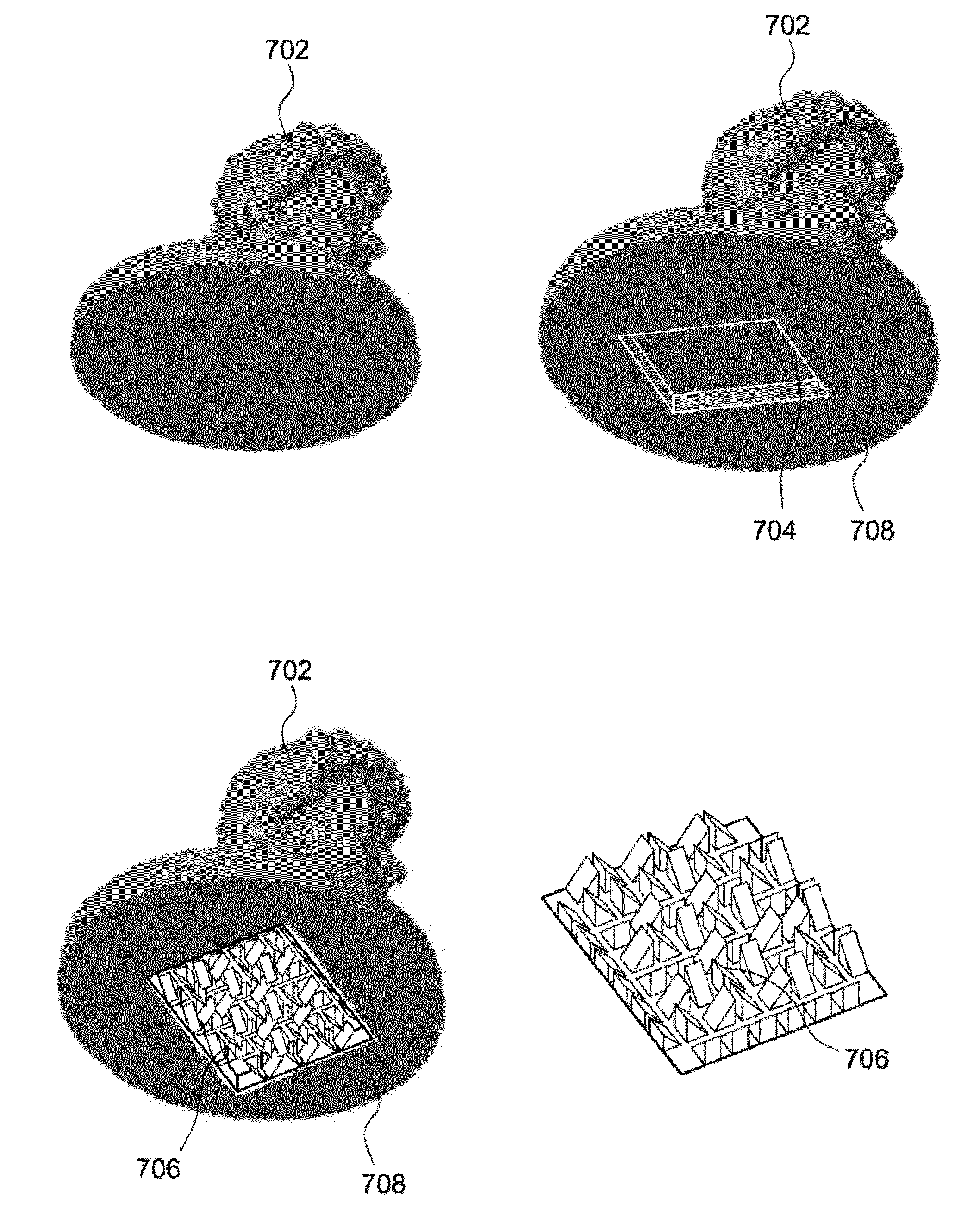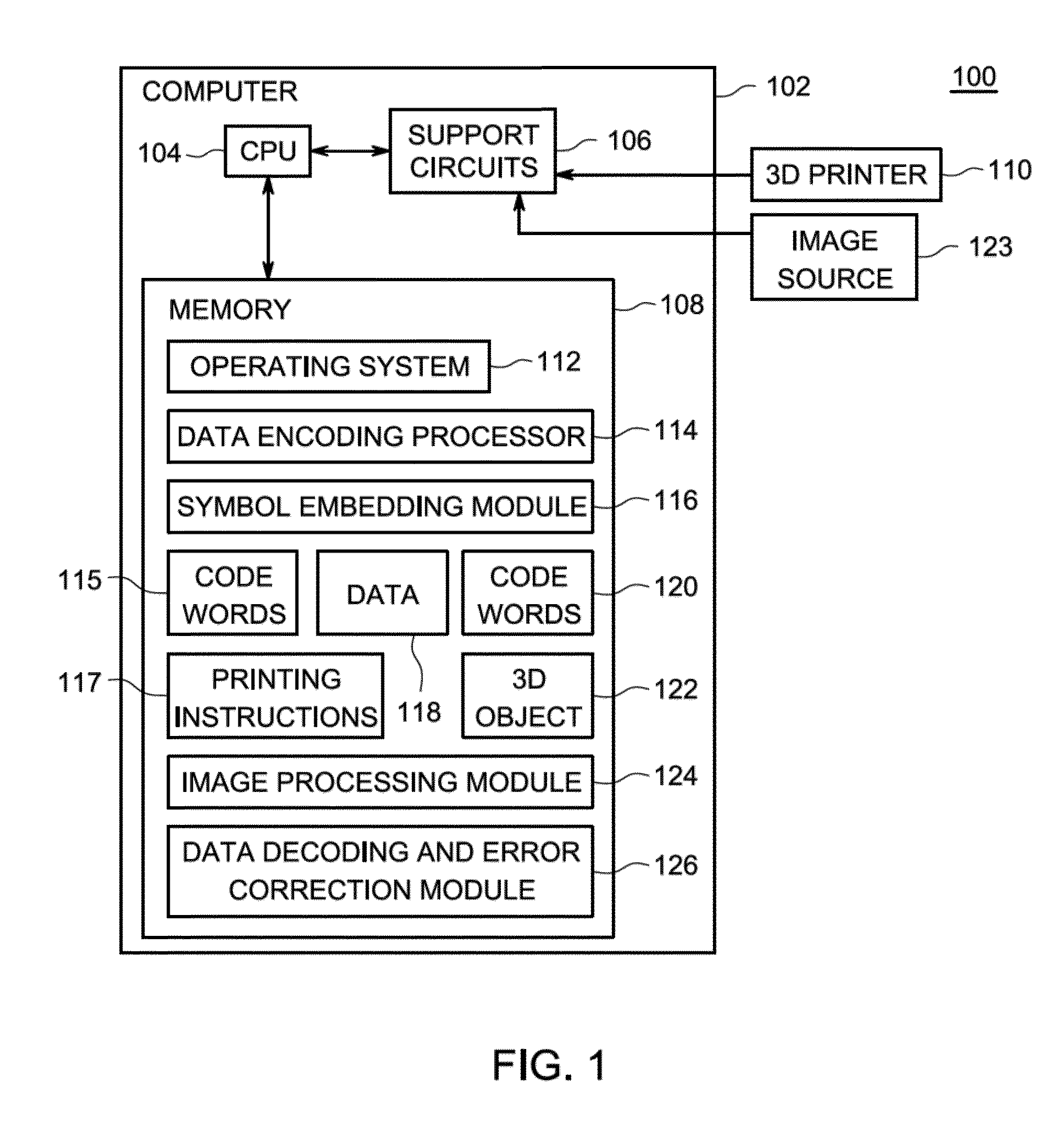Method and apparatus for storing and retrieving data embedded into the surface of a 3D printed object
a 3d printed object and data technology, applied in the field of 3d printing of objects, can solve the problems of limited data that can be conveyed by barcode type labels, 1d and 2d barcodes, and limited space on labels
- Summary
- Abstract
- Description
- Claims
- Application Information
AI Technical Summary
Benefits of technology
Problems solved by technology
Method used
Image
Examples
Embodiment Construction
[0024]As previously explained, existing barcode solutions provide 2D representations on surfaces of objects as barcodes. However, when 2D surface barcodes are used, the amount of data that can be conveyed is limited by the 2D area of the barcode used to form the symbols. Additionally, the durability of their data presentation is low because associating the data of a barcode to an object by use of a surface label can be easily damaged (for example by water degrading ink used to print the barcode or by water degrading the adhesive used to affix the barcode to the surface of the product) or the printed barcode may worn away over time. Even furthermore, cryptology and steganography techniques for providing robust data security are unnecessarily limited, since they are limited to techniques that only use two dimensions.
[0025]Thus, and in accordance with embodiments of the present invention, techniques are provided herein for the creation, association, and retrieval of data that: (1) faci...
PUM
 Login to View More
Login to View More Abstract
Description
Claims
Application Information
 Login to View More
Login to View More - R&D
- Intellectual Property
- Life Sciences
- Materials
- Tech Scout
- Unparalleled Data Quality
- Higher Quality Content
- 60% Fewer Hallucinations
Browse by: Latest US Patents, China's latest patents, Technical Efficacy Thesaurus, Application Domain, Technology Topic, Popular Technical Reports.
© 2025 PatSnap. All rights reserved.Legal|Privacy policy|Modern Slavery Act Transparency Statement|Sitemap|About US| Contact US: help@patsnap.com



